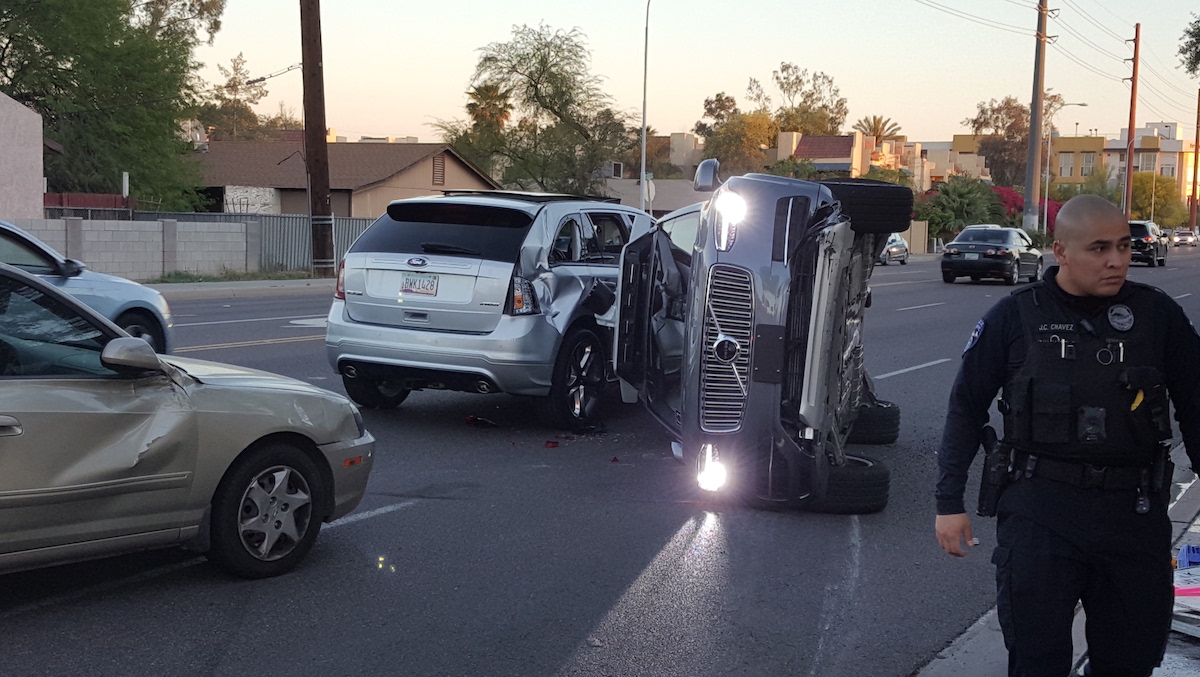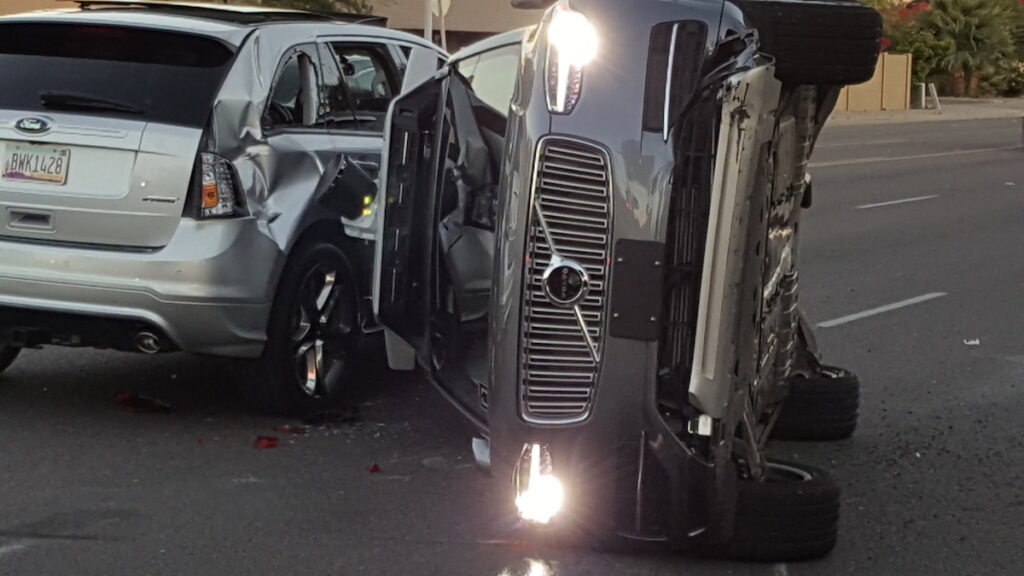Taxi company turned driverless innovators Uber temporarily suspended their autonomous car program after a serious crash this weekend. The crash, which happened in Tempe, Arizona on 25 March, happened when the driver of another car failed to stop at a junction, hitting the Uber vehicle. Images released by Fresco news show the SUV on its side on what appears to be a busy road.
Although Uber’s car was not at fault, and there were no injuries, the company isn’t taking any chances and halted their entire driverless fleet for two days.
This isn’t the first time Uber has come under fire for its driverless malfunctions. In December 2016, a taxi driver appeared to catch on film an autonomous Uber cruising through a red light and over a pedestrian crossing. Uber promptly suspended the ‘drivers’ that were in the vehicle at the time citing that the mistake was human error.
Driverless cars are supposed to conjure an image of a crash-free future where human error is no longer an issue and traffic jams are but a distant memory. The problem is that to reach this utopian vision, we need to develop the technology to deliver it. And developing new technology involves (at least in the early years) failure.

Statistics show that in the US, for conventional vehicles, there are 4.1 crashes for every million miles travelled. For self-driving cars, the rate is more than double that at 9.1 crashes per million miles travelled! Of course, these crashes aren’t all serious.
So far, there has only been one fatal crash involving an autonomous car. In May 2016, Joshua Brown lost his life after his Tesla Model 3 drove at full speed intro the back of an 18-wheel trailer while in autopilot mode.
Tesla’s vehicles are accepted to be the most technologically advanced. However, a report that Mr Brown was watching Harry Potter at the time of the crash serves as a stark reminder that there is a long way to go before driverless cars can be given full autonomy.
In the meantime, crashes are sadly inevitable. In fact, Martin Robbins of The Guardian predicted that the Tesla Model 3 would be involved in a fatal crash just weeks before details of Mr Brown’s fatal crash were revealed. Indeed, Honda have previously admitted that it will be 2040 by the time their cars are crash free.
So what happens now? Are you just crossing your fingers and hoping a driverless car isn’t being tested on a road near you? Or have you accepted that advancements in technology involve failure, and that the crashes we are seeing now will be for the greater good?
Let us know what you think in the comments.
Notable autonomous vehicle crashes
February 2016 – Google Lexus crashes into a bus in California as it manoeuvres around sandbags.
May 2016 – Joshua Brown dies after his Tesla Model 3 crashes in autonomous mode.
May 2016 – a Volvo that’s sold with optional autonomous features ran into a group of people when the owner failed to realise that the pedestrian detection feature wasn’t installed in the car.
October 2016 – NuTonomy (Singapore taxi startup) crashes into lorry after ‘software anomalies’ and halting the company’s tests for over a month.
March 2017 – an autonomous Uber car is rolled onto its side after being struck by another car.

